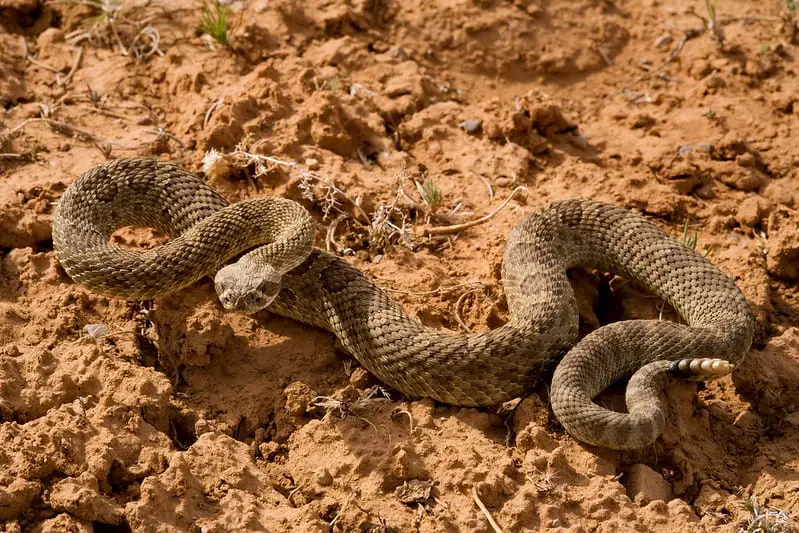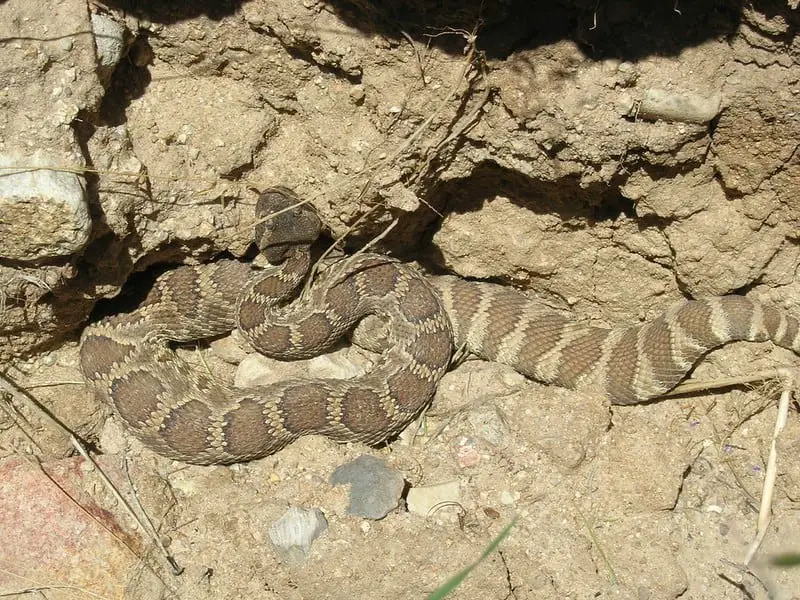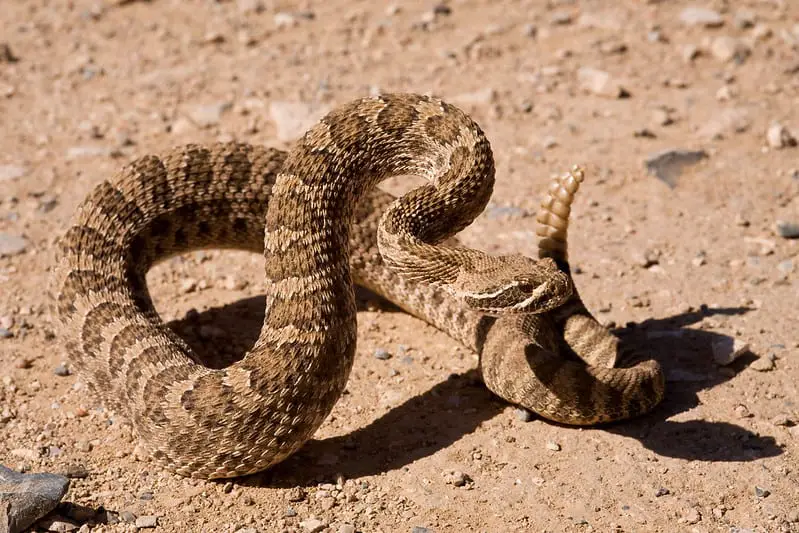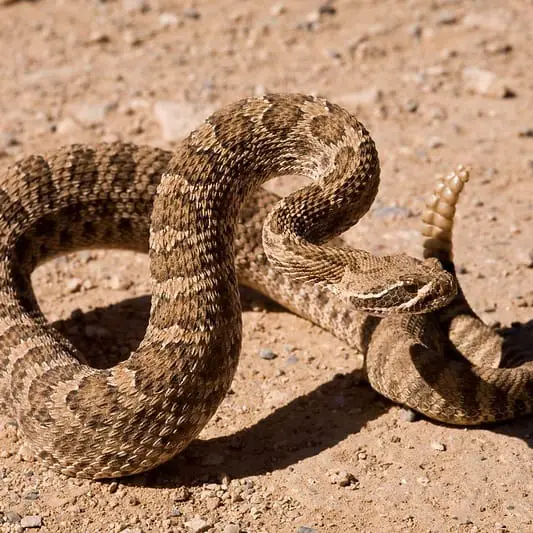The western rattlesnake or prairie rattlensnake, is a venomous snake species that can be found in the Mid-West of the United States, mostly east of the Rocky Mountains, in Southern Canada as well as in Northern Mexico. In the past, the subspecies of the Pacific rattlesnake have been considered as part of the Crotalus viridis species. This has been revised and the similar-looking, slightly smaller and darker rattlesnakes west of the Rocky Mountains are now clustered in a separate species Crotalus oreganus, the Pacific rattlesnake.

Description
Size
Western rattlesnakes reach an average length of 3.3 feet (100 cm). The largest populations are found in Montana where adult snakes often reach a length of almost 4 feet (120 cm). The largest ever recorded western rattlesnake was close to 5 feet long (150 cm).
Pattern
The body of the western rattlesnake comes in various shades of light brown. The head is triangle-shaped, whcih is typical for rattlesnakes. Behind the eyes, the snake has two white stripes with a darker brown between them. The dorsal side of the body is adorned with several darker brown blotches that are often surrounded by thin lines of black and white color.
The snake is sometimes confused with the western diamondback rattlesnake. However, the dark brown blotches of the western rattlesnake are not diamond-shaped and the western rattlesnake does not have thy typical black and white coloration before the rattle.

Hunting Behavior
During the coller months, the snake is usually active during the day while it becomes nocturnal during the hot summer months. When looking for food, the western rattlesnake usually finds a slightly elevated spot where it can hide well. This can be rocks, tree stumps and sometimes it is even found on trees. From its hiding spot, the snake waits patiently for unsuspecting prey passing by. As soon as the prey is in striking distance, the snake strikes quickly. Its main prey, small mammals such as rats and squirrely usually manage to escape after the bite but the strong venom will render them immobile quickly. The snake uses its heat sensors to follow the wounded animal’s tracks. As soon as it has found the unconscious or death prey animal, it digests it as a whole. Juvenile rattlesnakes also eat smaller prey like reptiles or other snakes.
Bite and Venom
The toxin of the western rattlesnake is a complex mixture of different proteins, including enzymes like proteases and peptidases. In addition to hemotoxic and tissue-destroying effects, the toxin also shows neurotoxic properties. A bite can cause severe medical issues ranging from local swelling and pain to cardiovascular issues. Biting is a successful defense mechanism for the rattlesnake. If the snake feels threatened, it will first warn the intruder with the rattling noise created with its rattle. If the intruder further approaches the snake, it might strike a bite and inject its venom.
If you are bitten by a rattlesnake, try to remain calm. Do not tie off the affected area and do not stop the bleeding if you are bleeding. Try to keep your heart rate as low as possible and get medical attention as soon as possible. The person who got bitten should move as little as possible. Either take a car to the nearest hospital, or if you are on foot, call an ambulance.

Habitat
Western rattlesnakes prefer dry and rocky areas. They are most often seen in areas with moderate vegetation.
Western rattlesnake range in the USA
The Western rattlesnake can be found throughout the Midwest from Southern Canada to Mexico. In the United States, it can be found in eastern Oregon, eastern Washington, southern Idaho, throughout Montana, South Dakota, North Dakota, western Iowa, Wyoming, Nebraska, Colorado, Kansas, Oklahoma, Texas, New Mexico and in eastern Arizona.
Scientific classification of Crotalus viridis
- Kingdom: Animalia
- Phylum: Chordata
- Class: Reptilia
- Order: Squamata
- Suborder: Serpentes
- Family: Viperidae
- Subfamily: Crotalinae
- Genus: Crotalus
- Species: Crotalus viridis
Currently, there are two recognized subspecies for Crotalus viridis:
- Crotalus viridis viridis – the Prairie rattlesnake
- Crotalus viridis nuntius – the Hopi rattlesnake
In the past, several more subspecies have been considered part of Crotalus viridis. These subspecies found west of the Rocky Mountains are now classified under a separate species, Crotalus oreganus, the Pacific rattlesnake.
Other common names
The western rattlesnake is commonly also referred to as the Great Plains rattlesnake, Prairie rattlesnake, and Hopi rattlesnake.
